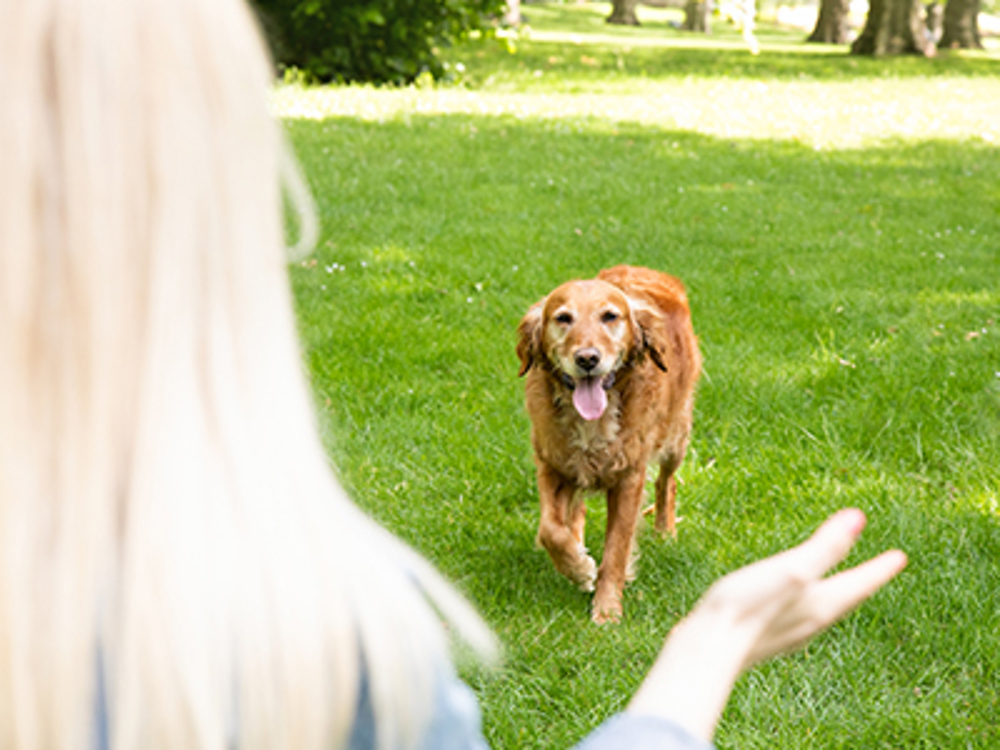
On hearing you say their name, your dog should always stop what they're doing, pay attention to you and wait for the next instruction, which may be to sit, to come to you or to go and lie in their bed.
Remember, if treats are used, please remember to take them out of your dog’s daily food rations, and grade them according to your dog’s stage of learning, and/or the environment.
Steps to teaching your dog to respond to its name
- Start teaching your dog to respond to their name in a quiet environment so that they can concentrate
- Have your dog close to you; you may put them on a lead if they are inclined to wander away
- Have a treat, or their toy, in your hand
- Say your dog’s name 10 times in a positive, friendly and consistent way and immediately give them a treat, or a game with a toy, after each repetition. Make sure that as they respond, you are smiling at them and letting them know they are getting it right – say ‘yes’, ‘good dog’ etc.
- Give your dog a few seconds to switch off and show interest elsewhere – now say their name in the same manner as before, and when they look around, smile, tell them ‘yes’, ‘good boy’, 'good girl' etc. and reward them with the treat or toy
- If they don’t respond within a second or two, reach forward, put the treat or toy right under their nose and lure them round towards you. Praise your dog for making the effort to follow the lure
- Repeat this stage until your dog is reliably turning without the need to reach forward and lure them
- Now put the treats or toy in your pocket, or on a high surface nearby. Allow your dog to become distracted elsewhere, say their name as before, reward with your smile, your voice – ‘yes’, ‘good dog’ – and quickly get their treat or toy out of your pocket, or from nearby
- Increase the distance between you and your dog before you say their name again. Increase the length of time they stay looking at you, with you smiling at them and verbally praising them, before you reach for the treat or toy, and increase the distractions around them – either add things to the room you are in, or reteach the behaviour outside in your garden or when out on a walk. If they struggle, go back a step or two to where they were successful before and progress more slowly. It would be better to keep your dog on lead at this stage, to ensure success
- Once your dog is responding well, add in cues for other behaviours that they know – use their name and then ask them to sit, or to come to you
- A great way of helping to associate your dog's name with positive things happening can be to use a food chase or by chasing a toy
Please note: there are many different ways to train your dog. This is just one method of teaching. If you are ever in doubt, please seek professional advice.
For more information and advice, you can find training classes with The Kennel Club Good Citizen Dog Training scheme, browse our full list of The Kennel Club Accredited Instructors or find a dog training club near you.
